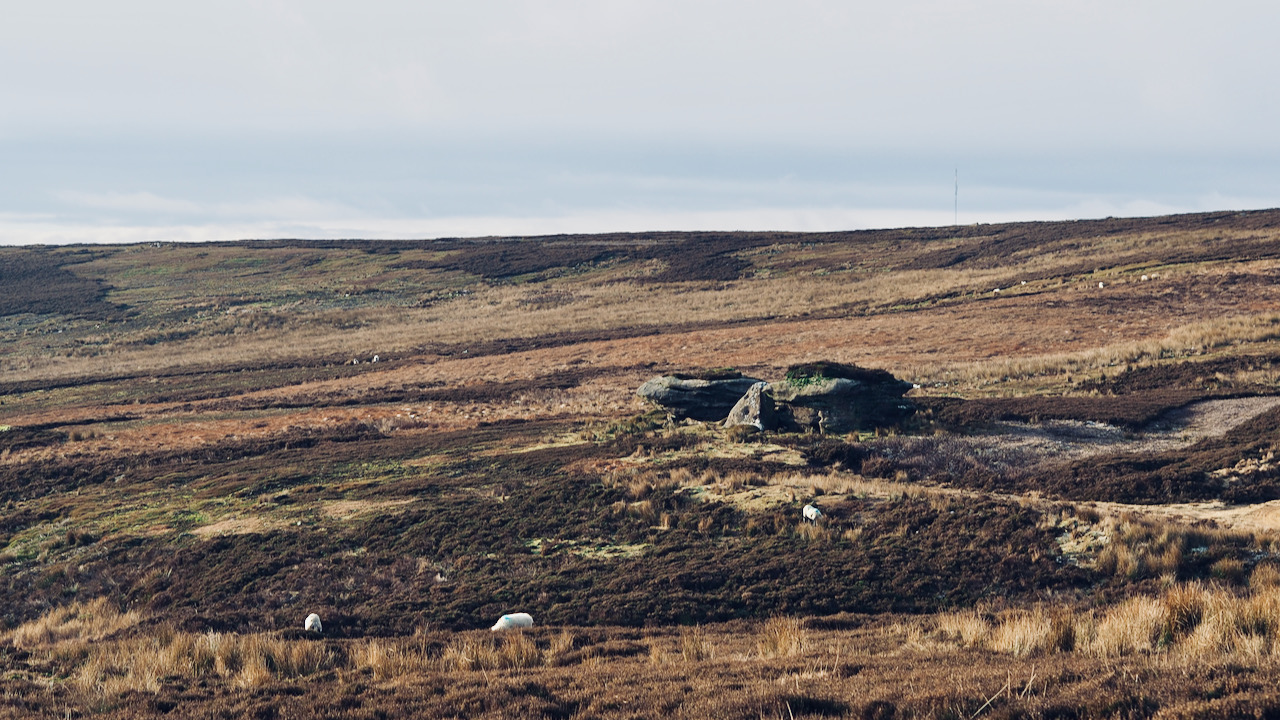I succeeded in reaching the Badger Stone before the snow came. By the time I returned to the car, I had transformed into a snowman.
The Badger Stone, an oddity in itself, is a sturdy sandstone outcrop standing alone and distant on the periphery of a plateau within a desolate moorland, rising to a height of 454m on Round Hill, the highest point on the North York Moors. The moorland around here still exhibits signs of extensive drainage or ‘gripping.’ Downstream, Badger Gill shapes a well-defined dale, eventually transforming into Bransdale, perhaps before its confluence with Bloworth Slack — a moot point.
It’s somewhat perplexing that such a prominent outcrop doesn’t feature in local myths and folklore. Nevertheless, it has served as a reference point for parish and estate boundaries1NYMNPA HER Records Nos.: 3549/9574/18030. Our early Mesolithic ancestors certainly paid a visit – flint blades, microliths, and micro-burins have all been unearthed in these parts2Prehistoric and Roman Archaeology of North-East Yorkshire. Page 54. Edited by D A Spratt. CBA Research Report 87. BAR British Series 104. Revised to 1990.. But that’s about the extent of it.
Perhaps I am mistaken in assuming the name must refer to the most renowned of British mammals. In 1912, Richard Blakeborough defined a badger in local dialect as a ‘huckster,’ and as a verb ‘to beat down in a bargain,‘ a meaning still commonly in use3BLAKEBOROUGH, RICHARD. “DIALECT GLOSSARY OF Over 4,000 WORDS and IDIOMS NOW IN USE IN THE North Riding of Yorkshire.” 1912..
A century and a half earlier, Francis Grose, in his work ‘A Classical Dictionary of the Vulgar Tongue,‘ described badgers as ‘rogues who, in collaboration with watermen, pilfered and occasionally committed murder on the water, by instigating a dispute with the passengers in a boat, boarding it, looting, disrobing, and tossing them overboard, etc.’4Grose, Francis. “A Classical Dictionary of the Vulgar Tongue.” 1785.
Fascinating, although navigable water is scarce in these parts. But he also defines the verb ‘to badger‘ as ‘to confound, perplex, or tease.‘ Now, that is perhaps a better interpretation—for I am certainly perplexed.
- 1NYMNPA HER Records Nos.: 3549/9574/18030
- 2Prehistoric and Roman Archaeology of North-East Yorkshire. Page 54. Edited by D A Spratt. CBA Research Report 87. BAR British Series 104. Revised to 1990.
- 3BLAKEBOROUGH, RICHARD. “DIALECT GLOSSARY OF Over 4,000 WORDS and IDIOMS NOW IN USE IN THE North Riding of Yorkshire.” 1912.
- 4Grose, Francis. “A Classical Dictionary of the Vulgar Tongue.” 1785.

Leave a Reply